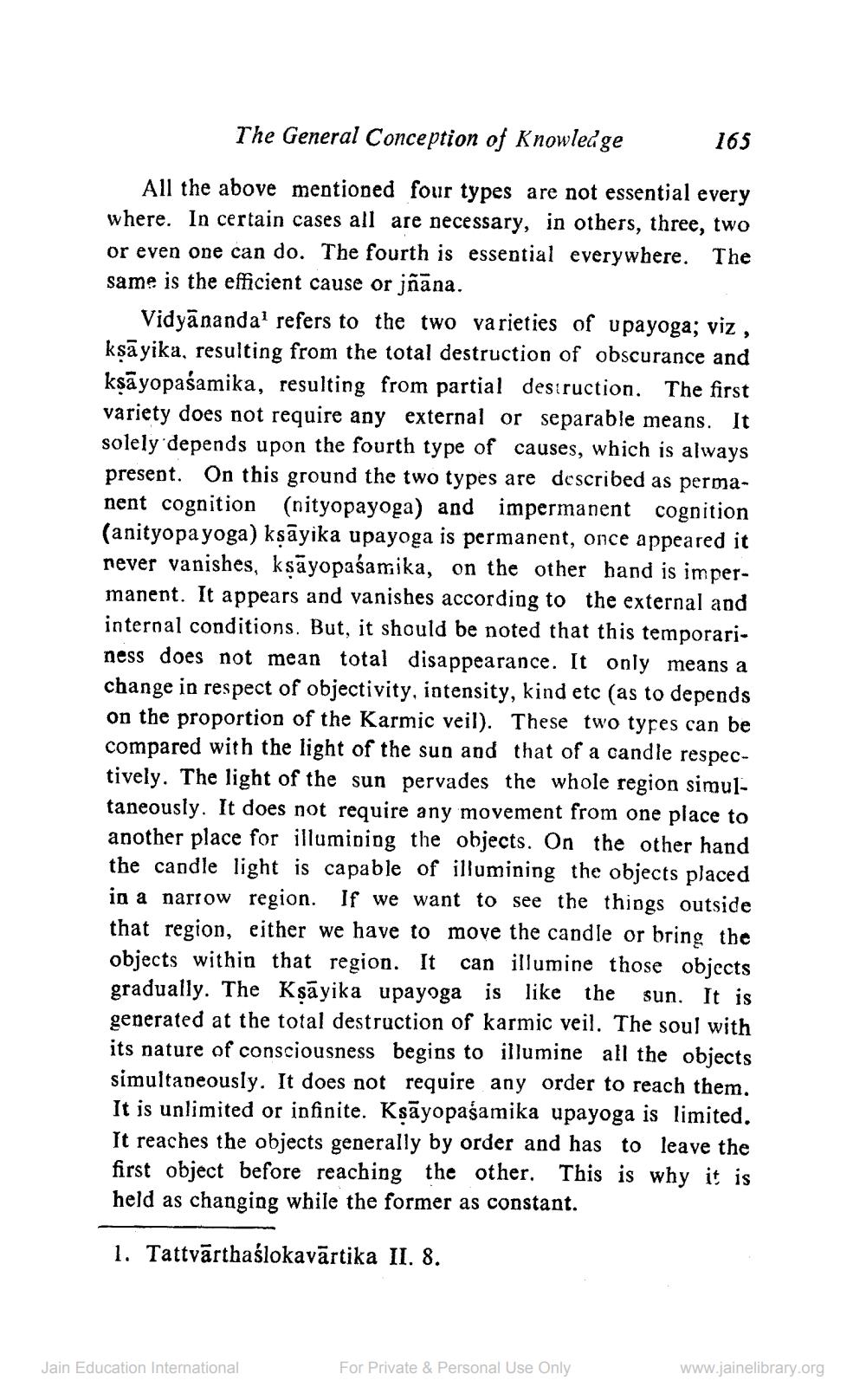________________
The General Conception of Knowledge
165
All the above mentioned four types are not essential every where. In certain cases all are necessary, in others, three, two or even one can do. The fourth is essential everywhere. The same is the efficient cause or jñāna.
Vidyānanda' refers to the two varieties of upayoga; viz , kṣāyika, resulting from the total destruction of obscurance and kṣāyopaśamika, resulting from partial destruction. The first variety does not require any external or separable means. It solely depends upon the fourth type of causes, which is always present. On this ground the two types are described as permanent cognition (nityopayoga) and impermanent cognition (anityopayoga) ksāyika upayoga is permanent, once appeared it never vanishes, kṣāyopaśamika, on the other hand is impermanent. It appears and vanishes according to the external and internal conditions. But, it should be noted that this temporariness does not mean total disappearance. It only means a change in respect of objectivity, intensity, kind etc (as to depends on the proportion of the Karmic veil). These two types can be compared with the light of the sun and that of a candle respectively. The light of the sun pervades the whole region simultaneously. It does not require any movement from one place to another place for illumiping the objects. On the other hand the candle light is capable of illumining the objects placed in a narrow region. If we want to see the things outside that region, either we have to move the candle or bring the objects within that region. It can illumine those objects gradually. The Ksāyika upayoga is like the sun. It is generated at the total destruction of karmic veil. The soul with its nature of consciousness begins to illumine all the objects simultaneously. It does not require any order to reach them. It is unlimited or infinite. Kṣāyopaśamika upayoga is limited. It reaches the objects generally by order and has to leave the first object before reaching the other. This is why it is held as changing while the former as constant.
1. Tattvārthaślokavārtika II. 8.
Jain Education International
For Private & Personal Use Only
www.jainelibrary.org




